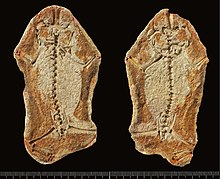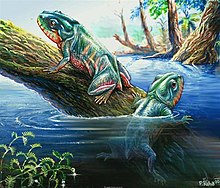The other day, just after arriving home from my herpetology final, I spotted this little guy on my front steps. He or she quickly ran under the steps and while I tried my best to get a good photo, they were just a little too quick. My roommate who was with me at the time freaked out and was afraid it would try to run in our house (this has happened many times with a few geckos), but I assured her that it likely didn't want anything to do with us.
I was able to identify this guy to be
Anolis carolinensis, or a green anole. While I wasn't able to get too close to it, I believe this one was an adult female due to its smaller size (about 4-5 cm in length). It's behavior was not that surprising, as she quickly ran when we started to walk up the steps and continued to run away as I tried to sneak behind the steps to take a picture, likely showing that she could in fact see me and did feel fearful or that I was a predator.
While I'm not sure of this individuals habitat, she was hiding in some leaves/debris that are beneath our steps. While they are primarily arboreal, this makes sense as there are a ton of trees surrounding my house, especially compared to other locations downtown. These anoles are native to our area, so it makes perfect sense that she was hiding around near my house!
It was really interesting for me to find this anole, and I found it really ironic that she was sitting right there in front of my house, right after our final exam for this class. It was really cool to be able to identify it in nature and tell my roommate about it. She thought it was really interesting to hear about it as well...although she didn't quite know why I tried so hard to get a picture. I can't wait to see more herps out in nature and get to identify them in the future!









